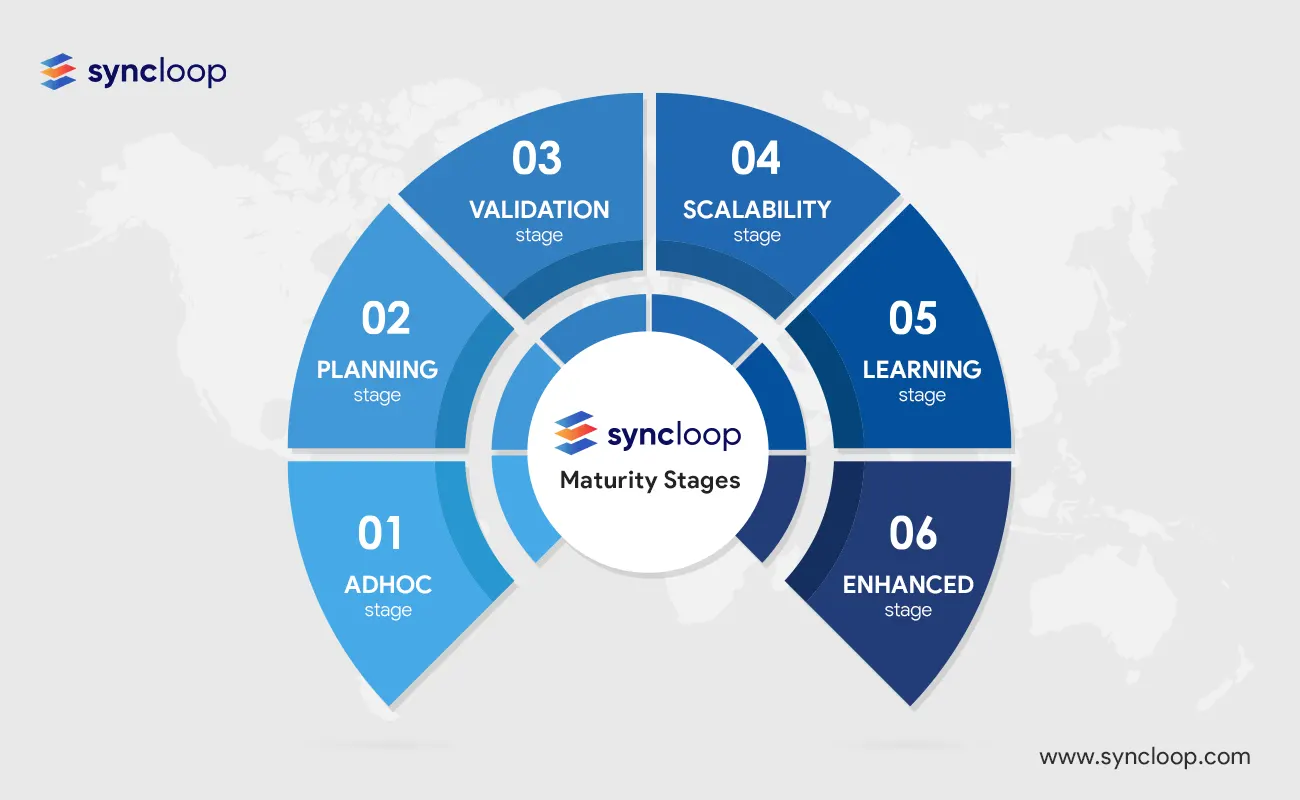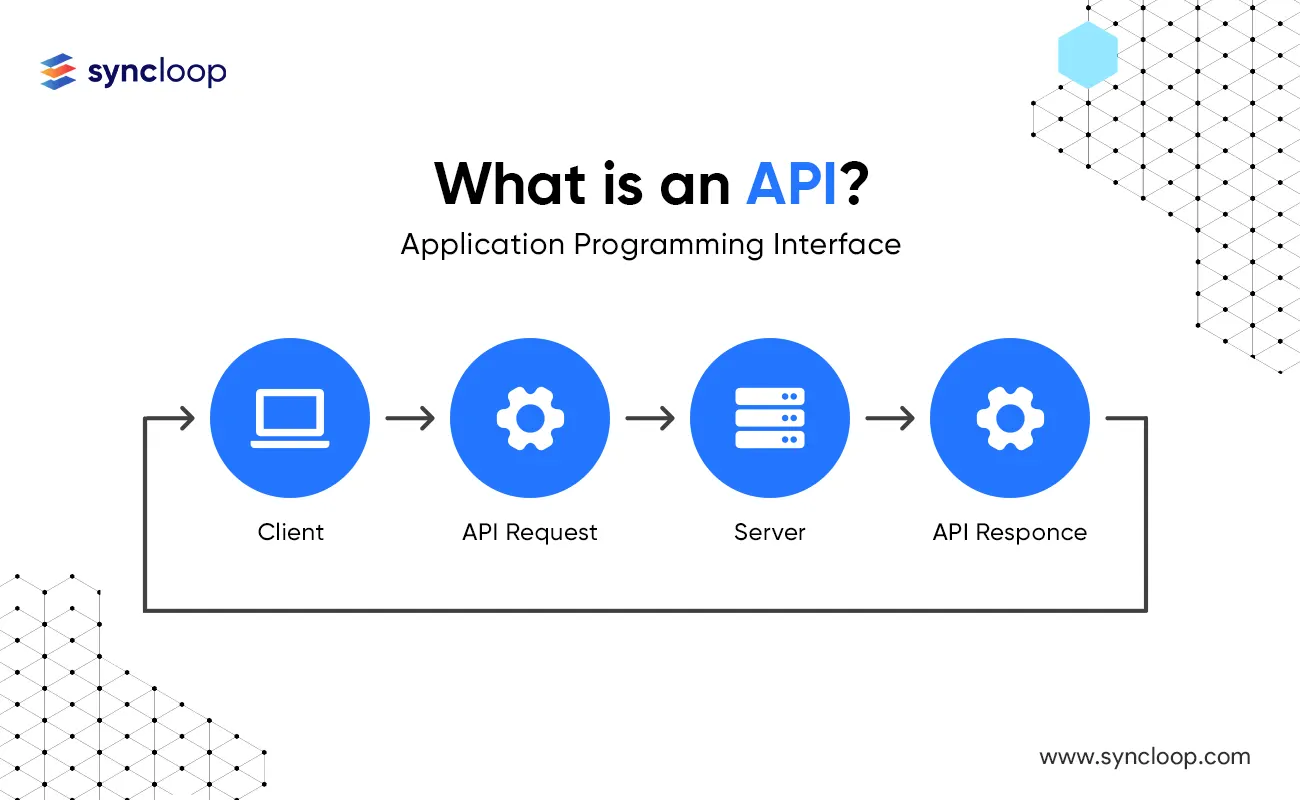Syncloop: A Truly Mature Restful API Development Platform
Posted by: Rupesh | February 06, 2024

Categories: API Maturity model, Restful API, Richardson Maturity Model
The REST APIs use the HTTP protocol to allow homogeneous and heterogeneous applications to communicate with each other via the internet. The need for evaluating these APIs on maturity is important because, an underdeveloped API can have problems with respect to the misuse of HTTP actions leading to slowdowns, poor code organization generating higher development and maintenance costs, and also confusing API structures. Therefore, there is a dire need for evaluating these APIs for speed, robustness, and scalability. In this blog, we highlighted API Maturity models that include the Richardson Maturity Model and the Syncloop Maturity Model. The focus of this blog is to elaborate on defining the maturity stages based on both maturity models.
Richardson Maturity Model
This maturity model was first developed by Leonard Richardson This model grades the API based on their restful maturity. Any API can be taken and evaluated for maturity with respect to this model. This model has four levels and any API is considered to be Restful once it reaches level 3 while levels 2 down to level 0 are considered less Restful. Levels 0 to level 3 are the stepping stones to becoming a true Restful API. The various levels explained in the model are discussed below:
Level 0 API: The level 0 API is also called as a Plain Old XML or POX. At this level HTTP protocol is used as a transport mechanism between a client and server or for any remote interaction. It does not take any advantages from various HTTP methods or HTTP cache etc. The APIs at this level have only one URL and use only one HTTP method called POST. This implies that if you are running an enterprise of 50 clients all 50 clients will share the same endpoint for retrieving and saving the data. Eg:
Getting Data: https//localhost:8080/clients
Posting Data: https//localhost:8080/clients
In both cases, we are using the same endpoint. At this level, any operations like GET, DELETE, and UPDATE are done using the POST method.
Level 1 API: In this level, each resource is mapped to a separate URI (Uniform Resource identifier). It tackles the complexity by breaking down a huge service endpoint into multiple service endpoints. Let us modify the above example in level 1 as: Eg:
URI for getting all the associated clients’ data: https//localhost:8080/clients
URI for getting the data of a specific client: https//localhost:8080/clients/cltA
Here two endpoints are used for accessing two types of resources. In level 1 also only one HTTP method (POST) is used to retrieve, get, delete or create data.
Level 2 API: In addition to what is provided at level 1, in the level 2 API correct and different HTTP verbs are used with each request. Here also multiple URI are used and each URI represents a unique resource. At this level we use HTTP GET for the get operation, HTTP PUT for the PUT operation, HTTP DELETE for the delete operation, etc. A unique response code is provided with each request. Considering the above example let
GET https//localhost:8080/clients
200 OK
This will get all clients from the server. The server will respond with a 200 OK message prompting that the operation was successful.
Level 3 API: In addition to what is being provided at Level 1 and Level 2, it also provides support for HATEOS. HATEOAS stands for Hypermedia as the Engine of the Application State and it is a component of RESTful API architecture and design. With the use of HATEOAS, the client-side needs minimal knowledge about how to interact with a server. HATEOAS enables a clear definition of control logic on the client side of the API. As a result, clients can conveniently use API resources following embedded links. Let us again take the example already discussed in Level 3
GET https//localhost:8080/clients
At this level after sending the above request to the server, we will get a response from the client JSON describing that client and self-documenting hypermedia. It provides all the related information about the clients and thus helps in self-documentation.
Syncloop Maturity Model
Syncloop is the world's fastest API Development Platform providing a visual experience to build, integrate, and deploy APIs and making them go live in seconds. At Syncloop, dedicated developers, Architects, and Tech Leaders plan and create APIs on a start-up-friendly and enterprise-ready API development platform. The platform acts as a bridge between the vendor database and the visual experience interface. It provides a high-quality, fast, comprehensive API development, management & deployment platform to enable organizations to be more agile.
At Syncloop it has been always a challenge to increase an organization's API maturity. Not an easy job as you need to change the behavior of the developers by making them aware and convincing them of the new way of developing fast, robust and scalable APIs. As Syncloop is an API Development Platform, we define API maturity as the ability of the enterprise to apply API architecture, design, and development in the services according to its strategic objective. This is possible only when the organization has all the necessary resources and intellectual capacity because here the focus is not on API architecture or a top-level platform implementation but on organizational goals. Syncloop has identified six maturity stages that are provided as under:
Adhoc Stage: a set of developers start developing REST APIs on the Syncloop platform in their solution to realize ad-hoc project needs. There is no central control over such projects and it keeps on growing based on the requirements of the projects.
Planning Stage: in this stage, the enterprise wants to validate various feasibility parameters with a single confined success story. The team is mostly consisting of different profiles composed to execute the POC. Their aim is to convince the future leads of the API initiative.
Validation Stage: in this stage, testing the first version of our API framework is accomplished in a number of pilot projects. The results of these validations are used to persuade future partners and clients of API adoption.
Scalability Stage: after updating the API framework with the outcomes and experience of the pilot projects, the API initiative will grow further by selecting identical projects or parts of the enterprise.
Learning Stage: the lessons learned in the scalability stage led to the first complete version of the API Development Platform. This platform will now be rolled out in the complete enterprise.
Enhanced Stage: the API Development Framework needs to be improved continuously. This stage embeds the continuous improvement and learning cycle.
Conclusion
REST (REpresentational State Transfer) is a popular architectural style for designing web services to fetch or alter remote data. APIs conforming to the REST framework is considered more mature because they offer ease, flexibility, and interoperability. Richardson Maturity Model (RMM) is a four-level scale that indicates the extent of API conformity to the REST framework. The maturity of a service is based on three factors in this model: URI, HTTP Methods, and HATEOAS (Hypermedia). If a service employs these technologies, it’s considered more mature.
Syncloop is a complete middleware platform that enables core, composite, or aggregation APIs, business workflows, and 3rd party integrations. At Syncloop, dedicated developers, Architects, and Tech Leaders plan and create APIs on a start-up-friendly and enterprise-ready API development platform. Syncloop defines API maturity as the ability of the enterprise to apply API architecture, design, and development in the services according to its strategic objective. Syncloop has identified six maturity stages that include ad-hoc, validation, Scalability, learning, and enhancement. These stages have transformed Syncloop into a truly mature API development platform.
Back to Blogs

